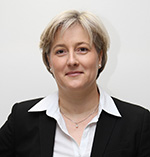 |
||
Home > TERATEC FORUM > Workshops > Workshop 8
TERATEC 2025 Forum |
|
Energy challenges and sustainable solutions in high-performance computing and artificial intelligence
Chaired by Charles Huot, Development Manager, Eclairion and Victor Martin, Manager, R&D Digital Hub Paris-Saclay, TotalEnergies
From the data center to the AI factory: innovation in performance and energy efficiency for infrastructures adapted to extreme density
By Séverine Hanaeur, Telco & Edge Deployment Strategic Segment Director, Southern Europe Region, Vertiv
IT densification represents one of the greatest challenges for data centers. While the trend is to house increasingly powerful equipment to optimize performance, it also creates significant challenges in terms of electrical and thermal management, coupled with growing environmental responsibility.
The reference design co-developed by Vertiv and Nvidia for the NVIDIA Blackwell GB200 NVL72 platform is an example of an integrated power and cooling solution specially optimized for intensive GPU workloads, with OCP infrastructure options.
 |
Biography: With a degree in International Business Techniques, Séverine Hanauer held a number of specialized positions in high-power UPS sales, followed by various management positions in Pre-Sales Engineering Applications, Consulting & Solutions, Thermal Management sales and then Data Center & Telecom sales. After holding the position of Telco & Edge Deployment Strategic Segments Director for Southern Europe at Vertiv, a specialist in the protection and optimization of sensitive data center infrastructures, Séverine is now Regional Strategic Accounts Director for Southern Europe. A member of various Gimelec committees and the France Datacenter association, Séverine is also a regular speaker at conferences, debates and events relating to IT and data centers in particular. |
|---|